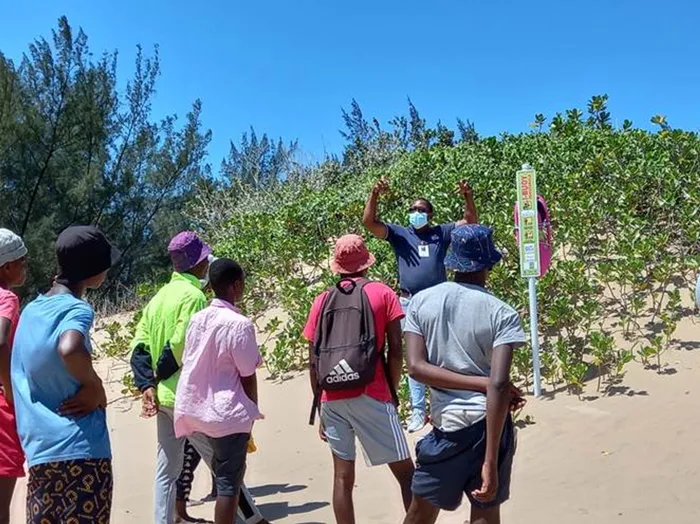WHO: 90% of unintentional drowning deaths occur in low-middle-income countries such as South Africa

Swimming instructor explaining to the locals how to use rescue buoys. Photo: Supplied
DURBAN - While the world is trying to cope with the Covid-19 realities, the World Health Organization has declared drowning as another pandemic, listing it as the world's third killer.
WHO said it considered drowning to be the third-leading cause of unintentional injury leading to death, saying 90% of unintentional drowning deaths occur in low-middle-income countries such as South Africa.
It said that while 80% of Americans could swim, only 15% of South Africans could swim, with of them being affluent individuals.
The figures have prompted the National Sea Rescue Institute to start programmes to teach people about the dangers of drowning, especially in rural areas.
The NSRI said that preventing drownings before they happened was key to solving the crisis. The organisation recently launched the Pink Rescue Buoy programme.
The bright pink buoys are installed across the country’s dams, rivers and beaches. They can be thrown to someone in trouble in the water in order to provide emergency floatation until help arrives. The poles the buoys are attached to also indicate who to call in an emergency and they provide an ID number, helping rescuers respond to the location.
Andrew Ingram, NSRI’s drowning prevention manager said the bright pink buoys acted as a reminder to take care if there were no lifeguards on duty.
He said were easy to remove from their pole, allowing them to be quickly thrown to the person in trouble – even by children. Pink was chosen as it allowed them to be easily seen in water.
The organisation, however, expressed concerns about the rise in theft of Pink Rescue Buoys in some parts of KZN.
“We have seen a spike in the theft of these rescue buoys particularly in the King Cetshwayo and Richards Bay areas in KZN. By stealing a Pink Rescue Buoy, a vital public rescue device, you could cost someone’s life,” said Ingram.
Hillside Aluminium/South32 company has also joined the fight against drowning, by sponsoring two full-time water safety instructors to teach children how to be safe around water. It has also provided more than 40 pink buoys in strategic locations in KZN.
The company’s vice president Calvin Mkhabela said the success of project depended on the community, calling on the communities to stand behind the project and teach children that the Pink Rescue Buoys should not be taken off their poles except in an emergency.
“The safety and security of communities is important to us. This initiative will go a long way in protecting beachgoers or those who live around water, especially children, who may find themselves in an emergency,” concluded Mkhabela.
To comment on this story send a WhatsApp message to our BackChat column on 071 485 7995
Daily News
Related Topics: